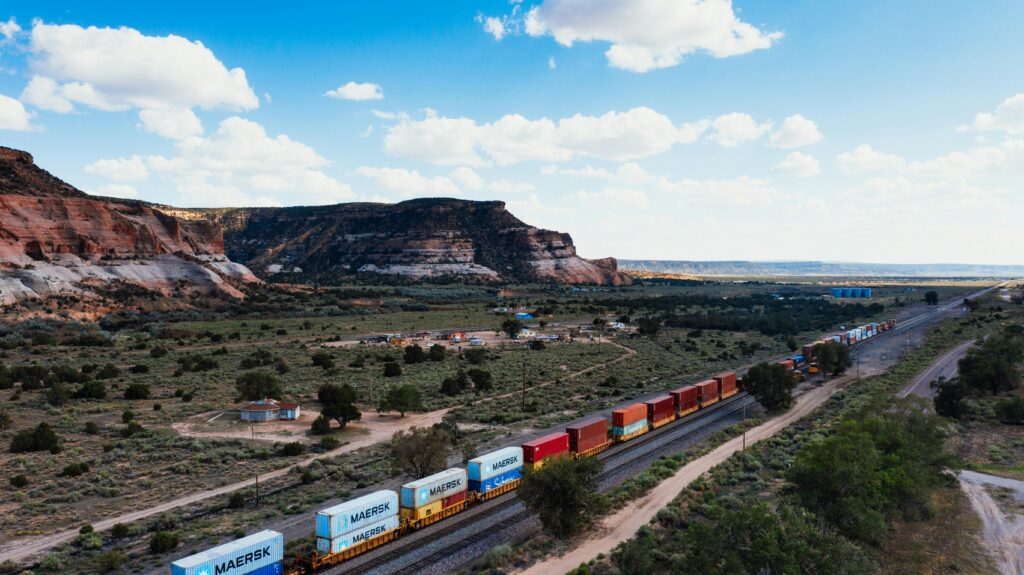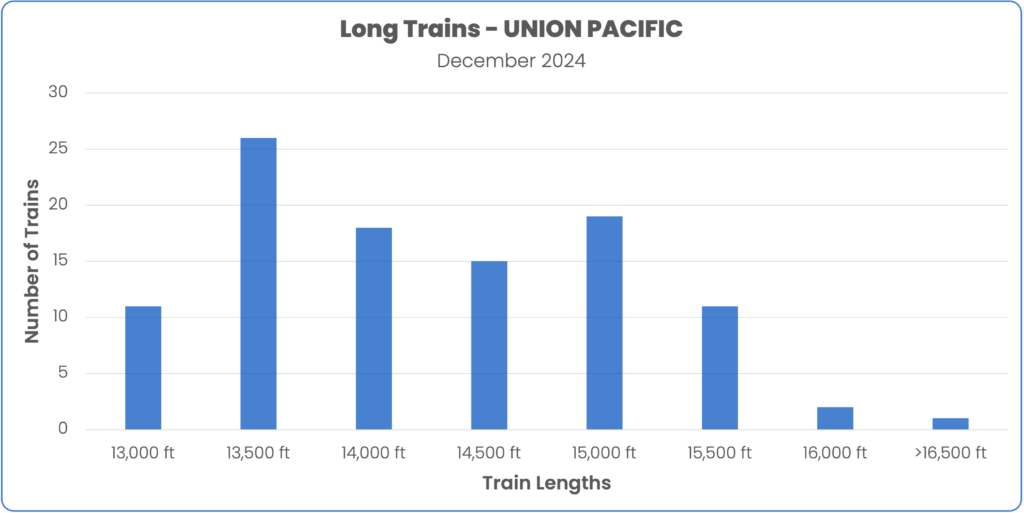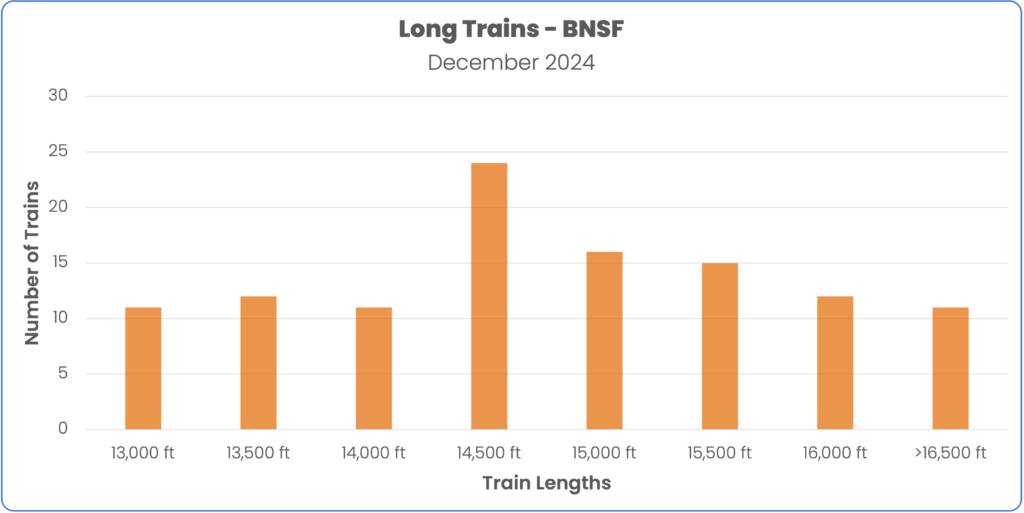Long Trains in the US Southwest

According to industry reports, only 1% of trains operated in the U.S. are longer than 14,000 feet. A review of trains measured by RailState in the US Southwest in December 2024 showed much higher percentages of very long trains in that part of the rail network.
Union Pacific – 10% of Trains Longer than 2.5 miles
Union Pacific, which is known to have the longest average train length among Class Is, runs a significant percentage of trains longer than 2.5 miles through the Southwest. These very long trains account for 10% of UP’s overall train volume in the region.
In December, that was 3-4 trains per day moving along UP’s mainline between California and Texas.

BNSF – 6% of Trains Longer than 2.5 miles
BNSF also ran 3-4 trains per day longer than 2.5 miles, accounting for 6% of BNSF’s overall train volume between California and Texas.
In December, BNSF ran more trains at the higher end of train lengths than UP. RailState identified 23 trains longer than 3 miles.

The Journey of a 3-mile Long Train
On December 20-21, RailState sensors captured an intermodal train traveling from Los Angeles to Texas on Union Pacific. With 5 locomotives and 260 well car platforms, the train clocked in at just over 3 miles long.
Along the journey, RailState captured the train on its network at:
- La Puente, CA: traveling at 52.3 miles per hour
- Mecca, CA: 41.8 mph
- Wellton, AZ: 30.8 mph
- Tucson, AZ: 13.6 mph
- El Paso, TX: 14.7 mph
- Buford, TX: 43.1 mph
The video combines still images RailState captured of the train moving through La Puente. Traveling at 52 mph, the train takes 3.5 minutes to pass by.
At other locations, the time it takes for this train to pass was significantly longer. At its recorded speed in Tucson (13.6 mph), this train would take nearly 14 minutes to pass.
Here’s what that looks like:
Communities experience these kinds of long delays at road crossings on a regular basis but until recently access to information about long trains has been nearly unavailable.
Why Train Length Data Matters
Blocked Crossings
Road crossings blocked by long trains are an increasing source of delays and frustration for commuters and can impair quick emergency responses.
With comprehensive train length data, traffic engineers can:
- Estimate blockage times more accurately
- Improve management of road congestion
- Deploy signals to suggest alternate routes when a crossing is likely to be blocked for an extended period
- Notify and reroute first responders to avoid delays during emergencies
Infrastructure and Transit Planning
Accurate train length data helps in modeling the cumulative impact on traffic flow, giving planners the needed information to:
- Validate which crossings are causing the most issues
- Effectively prioritize remediation investments in grade separations
- Plan for changes to size and location of sidings
- More equitably share costs of infrastructure investments
Safety and Operations Research
Recent research into the derailment risk and operational challenges of longer trains has been limited by lack of access to comprehensive, accurate train length data.
The National Academies Consensus Study Report on Long Freight Trains stated that getting data “with sufficient detail to ascertain train type and length for the purpose of more granular assessments” would not be possible from the railroads.
Another study from 2024 that showed increased derailment risk from longer trains. This report relied on data from the FRA Rail Equipment Accident (REA) and Highway-Rail Grade Crossing Accident (HRGCA) databases, which only includes information on trains involved in accidents. This report made clear: “data on the lengths of trains that are not involved in accidents are largely unavailable.”
That data is now available. Throughout the US Southwest and expanding quickly across the US Class I network, RailState is providing comprehensive, granular insights into train lengths, commodity flows, and network performance for planners, policy-makers, and industry.
